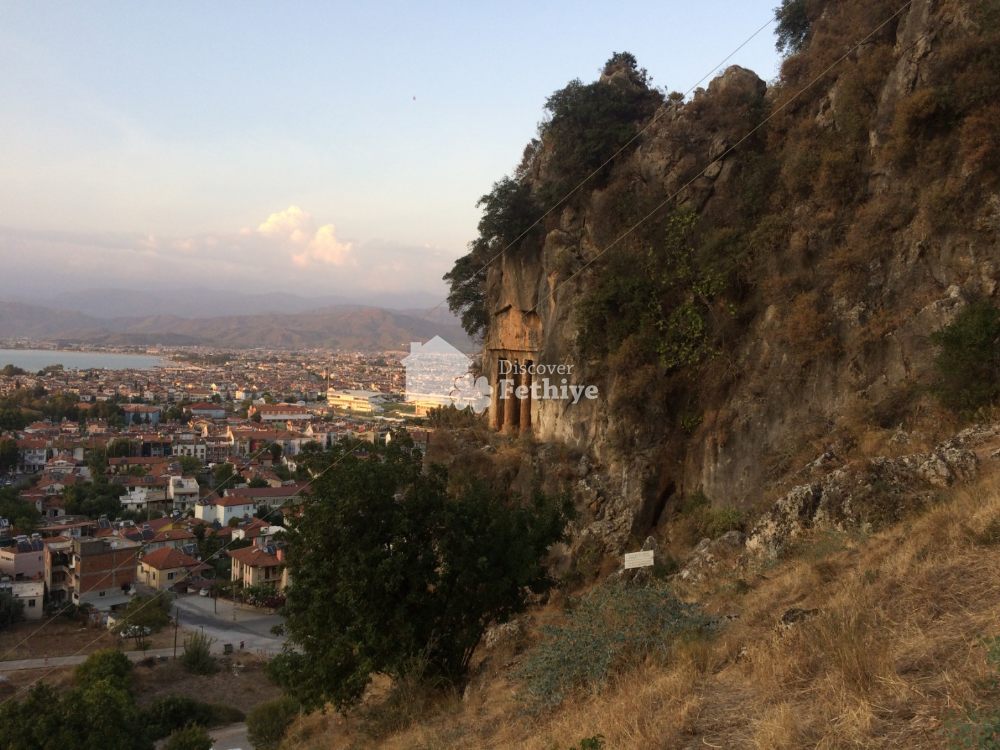General
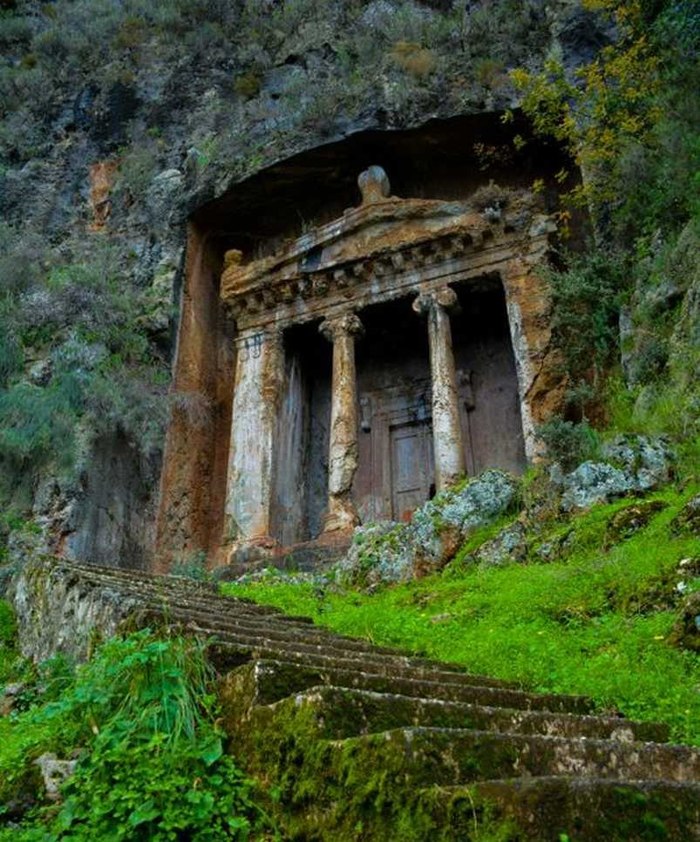 The Tomb of Amyntas
The Tomb of Amyntas
Among the numerous rock tombs carved into the steep slopes of the southern hills of Fethiye, facing north and easily seen from the valley below, the most famous one is that of Amyntas son of Hermagios.
To reach the tomb, you will see a staircase leading up the mountain. The staircase has a lot of steps, so you will probably feel rather tired after climbing it, but it's worth the effort, because when you reach the top, then Amintas huge tomb will be waiting for you. It is perhaps one of the most spectacular tombs in Turkey.
This tomb, which has been dated to the 4th century BCE by the epigraphic works, is in the form of the front of an 'in antis'* style lonian temple, reflected on the rock surface. A long stairway has been constructed at the end of the path to reach the tomb. From the end of the stairs, the tomb is reached climbing the 4 stepped crepidoma*. At first sight, lonian columns carved out of solid rock, attract one's attention. In the middle part of the left column, 'Amyntas son of Hermepias' is written in the 4th century BCE script.
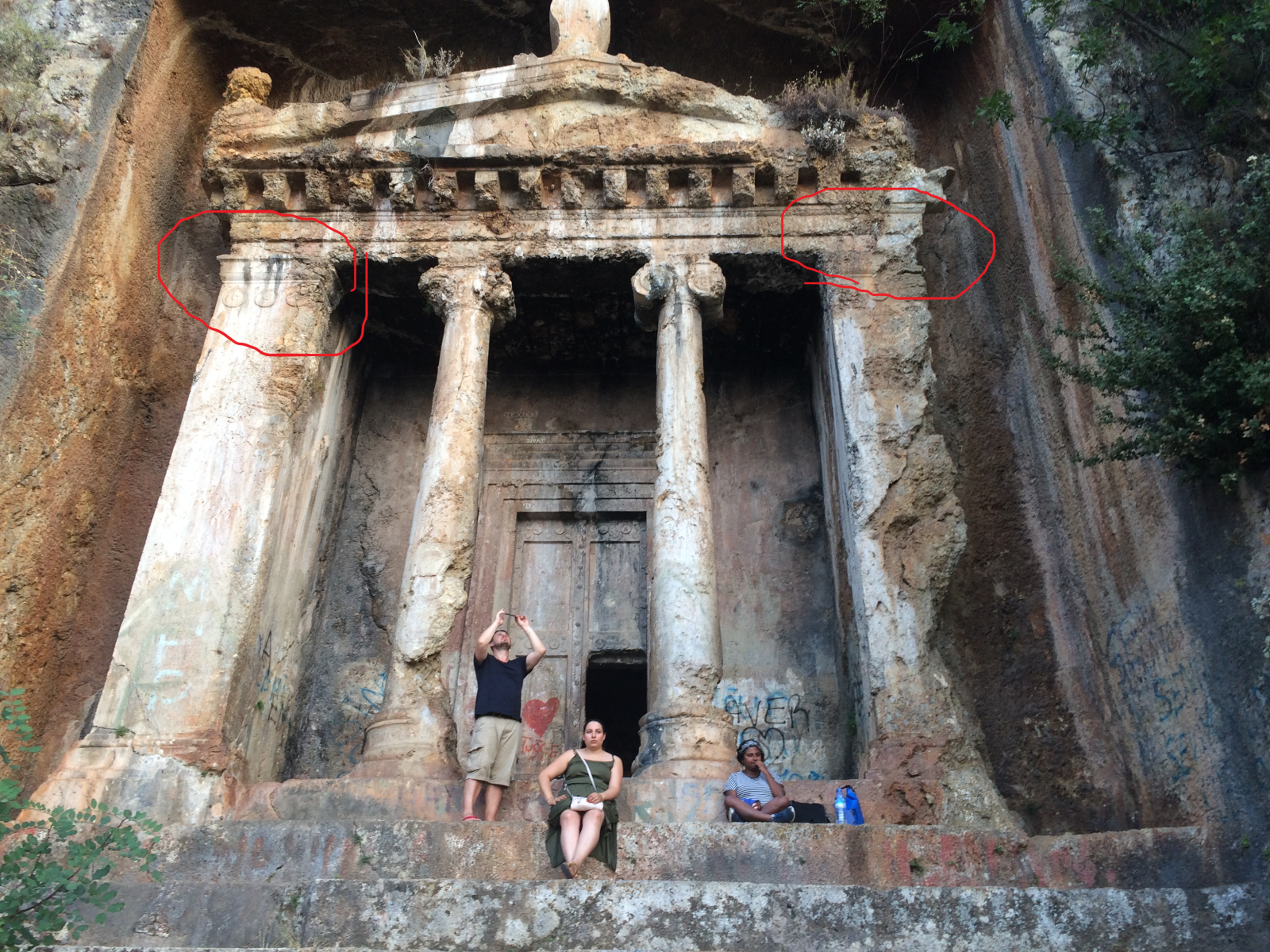 Right behind the columns at the upper parts of the frontal walls, one on the left and the other on the western right side of the chamber, three emblems (rozettes) on each wall are visible. The emblems (rozettes) on the western frontal wall have been eroded by underground water seeping through the main rock. On the top of the Ionian style columns, there are two stepped architraves* and above that, geisipodes*. On the pediment there are acroliths, one of which has been totally destroyed and the other two partially damaged.
Right behind the columns at the upper parts of the frontal walls, one on the left and the other on the western right side of the chamber, three emblems (rozettes) on each wall are visible. The emblems (rozettes) on the western frontal wall have been eroded by underground water seeping through the main rock. On the top of the Ionian style columns, there are two stepped architraves* and above that, geisipodes*. On the pediment there are acroliths, one of which has been totally destroyed and the other two partially damaged.
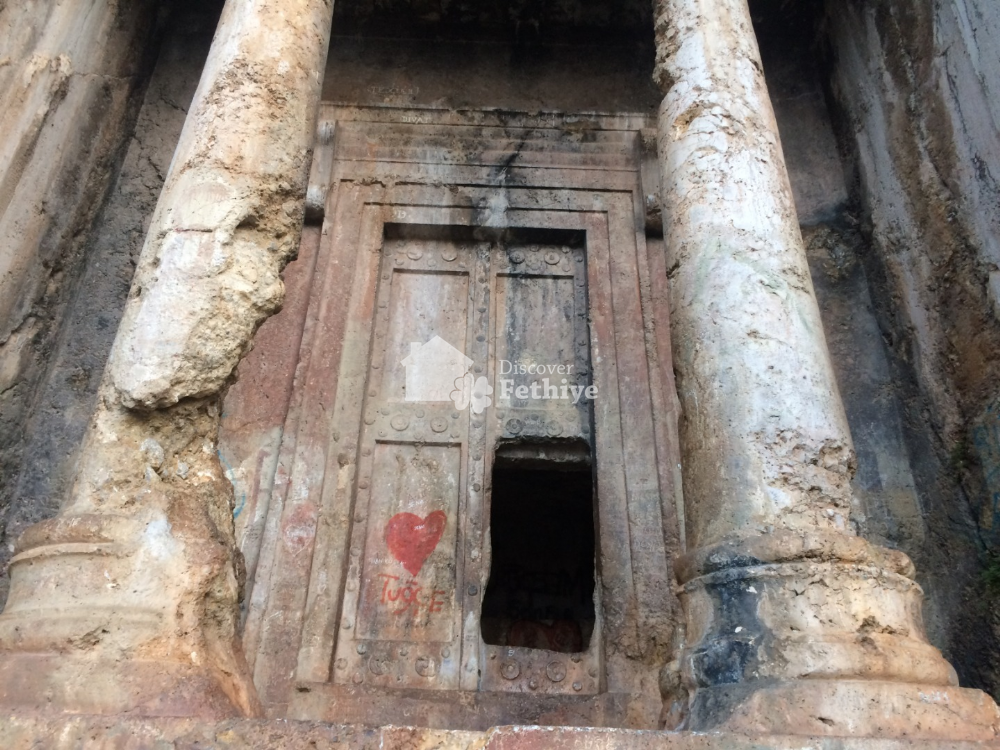
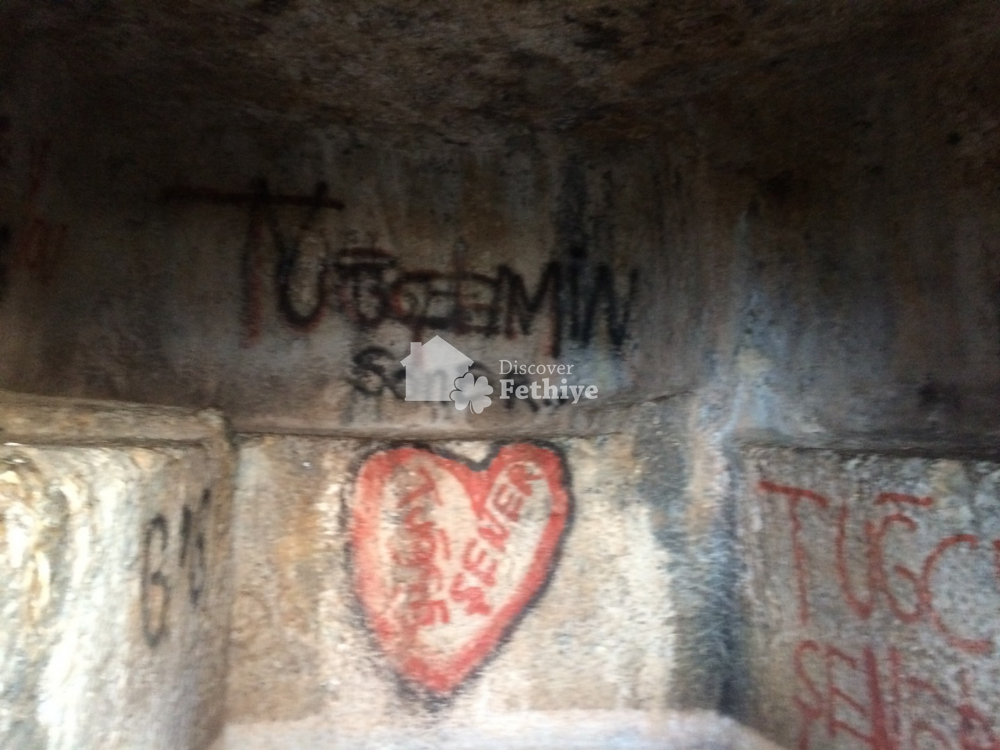
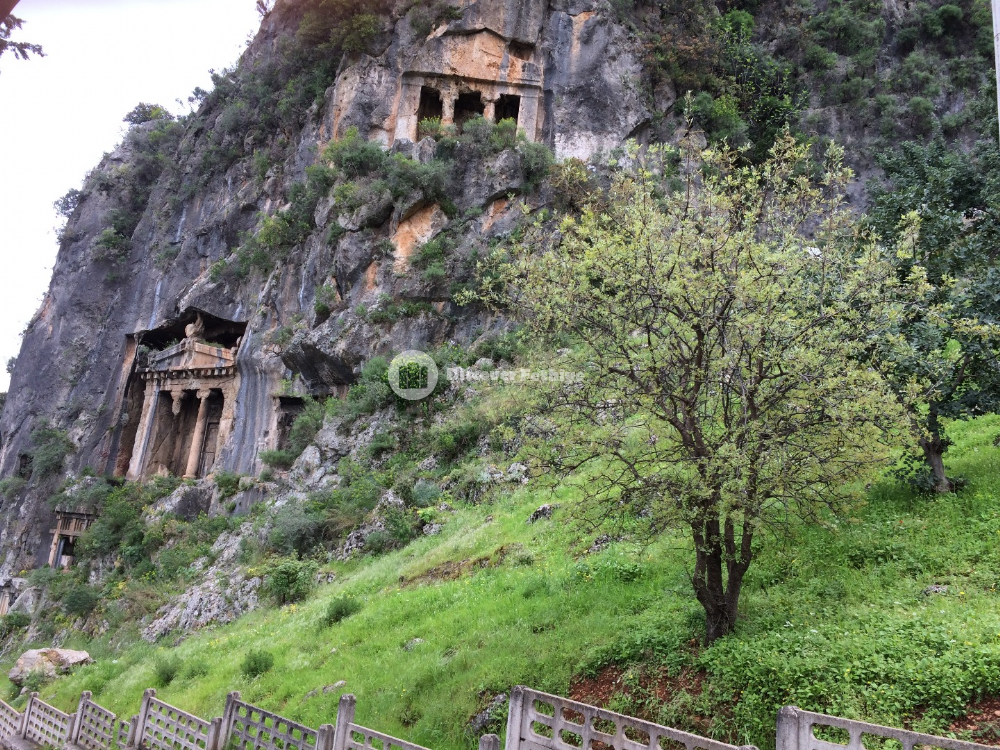
Amyntas Rock Tomb and other tombs on the east side of the steep slope of the moon are generally recognised as the best examples of the metal and woodwork of Lycia.
This tomb group, which is considered to be the symbol of the city, unfortunately lost some of its character due to erosion by natural factors.
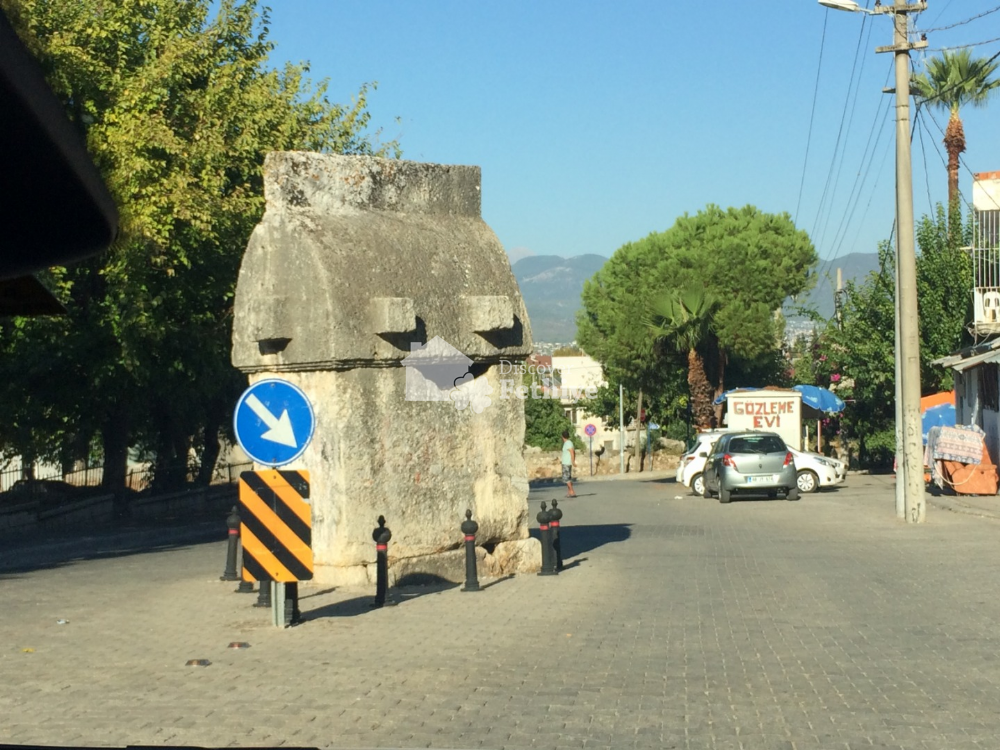
As one of the most magnificent examples of the Lycian civilization, Amyntas can serve as your guide in your journey through history with the nobility of the centuries united with the majesty of the mountain where the king's tomb is carved into the hillside.
* in antis - the posts or pillars on either side of a doorway or entrance of a Greek temple
* crepidoma - the multilevel platform on which the superstructure of the building is erected
* architrave - the lintel or beam that rests on the capitals of the columns
* geisipode - teeth resembling wooden architecture in the beam ends.


